Call of Duty: Black Ops 4 was met with mixed reactions from the community, with its Multiplayer being especially controversial. It’s been criticized by some for being too radical of a departure from the franchise’s roots, while others considered it a step in the right direction. Regardless, Black Ops 4 was extremely polarizing to the wider gaming community, no thanks to the game’s frustrating balance and egregious post-launch microtransactions.
Underneath the technical issues and conflicting design decisions, an entirely different vision for Black Ops 4’s Multiplayer was intended. It’s easy to imagine the game went through a major shakeup during its development, with rumors in early 2018 suggesting the game would be similar to Overwatch.
Initial plans included each Specialist having their own set of abilities and ultimates akin to Overwatch, an all-new ‘Escalation’ system, the return of War from Call of Duty: WW2, and so much more. All these features were scrapped, reworked or neutered before the May 17th reveal of the game.
Redefining ‘Call of Duty’
The design team was set on a singular goal from Day 1: creating an ambitious team-focused shooter that would challenge the franchise’s winning formula.
Coming off the heels of Black Ops 3 and its competitive season, the developers began brainstorming on how to take the core systems of the Call of Duty series to the next level. With the success of Black Ops 3’s Specialist heroes and the rising popularity of games such as Overwatch, scoping the next Black Ops game to be a competitive hero shooter made perfect sense.
Treyarch first started by going back to the drawing board and reconfiguring the mechanics of Black Ops 3 into a more tactical, hero focused game. Scorestreaks were removed completely, the time to kill was increased across the board, a stamina bar was introduced to slow down the pacing and create-a-class was replaced with customizable Specialist loadouts.
Their earliest playable prototypes in mid to late 2016, internally referenced as the ‘War Zones Prototype’ included mechanics such as Specialist drafts, barrier building and a new objective-focused spawn system. Specialists had several built-in abilities, with an all new “Ultimate” which was activated by holding down triangle (or Y) alongside integrated passive traits and a predefined selection of weapons.
Specialists such as Reaper had 200 health but lowered mobility, and were locked into using heavy weapons such as Light Machine Guns – while Outrider had several built-in stealth traits alongside familiar abilities such as Vision Pulse and Sparrow. Additionally, every Specialist would be recognized under one of three Positions: Slayer, Objective and Support, with each ‘Position’ having a built-in passive, such as being able to capture and decay objectives faster.
The gamemode, which itself was an earlier precursor to Control, saw two teams fighting over capture zones in an attack and defense format. An all-new map set within Ethiopia was blocked out and iterated on during playtesting, which was done to ensure the layout would support all the new mechanics. After several months of iterating on these new concepts, the internal reception was positive, and the team was excited to continue on a totally new direction for their next upcoming release.
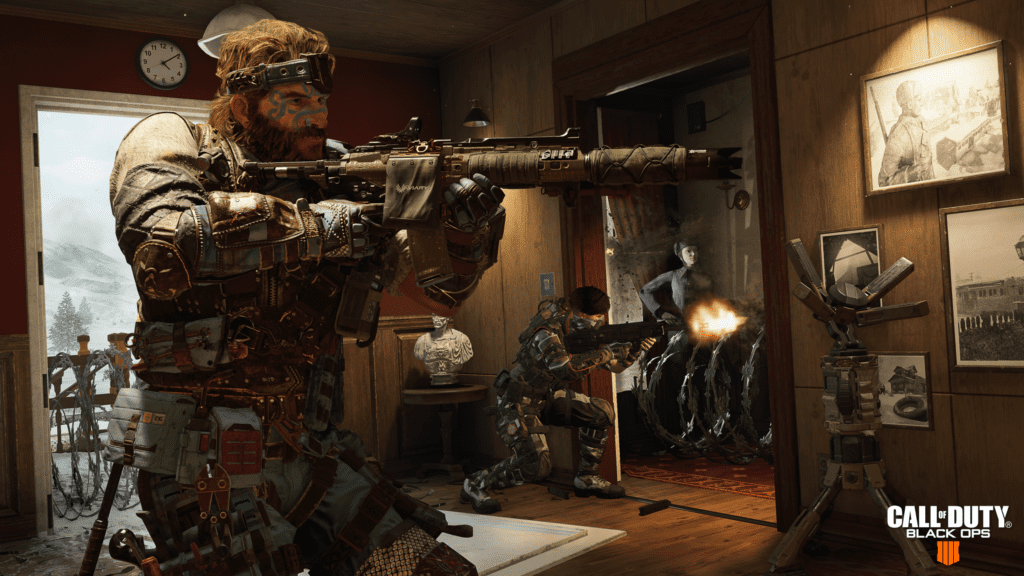
While primitive, the War Zones prototype introduced several ambitious ideas which would define Black Ops 4’s next year of development. As Treyarch continued creating new systems such as manual health regeneration into the next year, the team found success in narrowing down the game’s roster of weapons and abilities into the Specialist heroes. Their agenda: each role on the battlefield should be distinct and fun, requiring unique team compositions and pre-game strategy.
But despite all of the major changes to the core gameplay, those didn’t even come close to one of the major new features in Black Ops 4’s Multiplayer. One that would change the game’s scope forever.
Escalating The Game
One of the huge new features for Multiplayer was Escalation. Instead of having a killstreak system with UAVs and Attack Choppers, the idea was for Specialists to grow increasingly powerful as the match progressed through dynamic in-game leveling. Interacting with objectives, using equipment, eliminating enemy players, going on killstreaks and gaining score in general would contribute to your Escalation.
This system is somewhat similar to the new Perk system found in Modern Warfare 2 today, but the system was intended to be a lot more advanced.
All players would start at Level 1 at 100 health with your loadout weapons, equipment and gear. As you gained score, your Escalation meter would increase, and your Specialist would eventually level up (to a max of 5 levels).
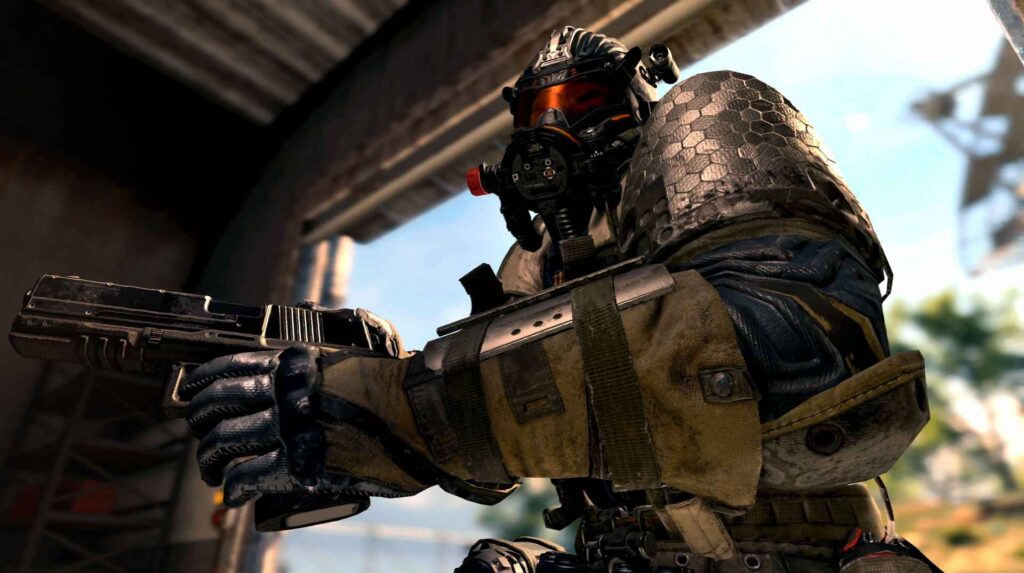
Each new level increased your base health and gave several perks which were uniquely attached to your Specialist. These progressive perks included upgrades such as faster reloading, increased movement speed and even Thrust Packs. The motivation behind the system was reimagining Scorestreaks into more passive and objective-focused upgrades, whilst still having a power creep. Imagine it like Modern Warfare 3’s Specialist Strike Package on steroids.
If you played well, you’d become stronger and harder to kill, resulting in longer survival.
One source said “To put it simply, they didn’t want you to call in AC130’s, they wanted you to become the AC130”.
Of course, your Escalation didn’t reset on death either and was a separate mechanic to out-of-game rank progression. Each level was specifically designed to feel noticeable, but without interrupting the gameplay. While there was a notification and HUD box displaying your level progress, you’d feel the change instantly regardless of your level. Reloading 2x faster wasn’t exactly easy to miss.
Their intention was for the match to start more ‘traditional’ with 100 health and boots on the ground combat, almost like Modern Warfare. But as the match escalated, you’d see players flying around the map with Thrust Packs and 200 base health. Treyarch’s design goal was to remove the ability for players to steamroll with Killstreaks and instead reward players by upgrading their overall combat capabilities.
Moving Forward
Going into the start of 2017, the team at Treyarch was optimistic about the game’s new direction. Several maps such as Seaside were in the blockout stage, most of the core systems were implemented or being refined, and things were coming together.
During internal playtests, reception was still positive. Manual healing and the longer time to kill made gunfights more tactical and team-oriented, and the new Control gamemode was perfect for the game’s new approach to combat. Specialists created an interesting way to counter enemy players and break stalemates, whilst leaning into your own preferred way of playing.
As the team progressed, it became clear that mechanics such as Killstreaks and Pick 10 simply wouldn’t integrate into this new vision. For such an ambitious design to be successful, everything needed to be redesigned from the ground up. Since the removal of Scorestreaks would impact the game significantly, the team at Treyarch had planned to reimagine previous Scorestreaks into new Specialist abilities and design new mechanics to fill in for others.
For example, the absence of UAVs created a lack of visibility on the mini-map. As a result, the new Fog of War system was created to fill in the gap caused by the removal of visibility based streaks. For those unaware, the Fog of War revealed an area on the minimap around yourself and allies, exposing the position of nearby enemies for the team. Not only was it an effective replacement, but it also encouraged teammates to stick together for increased mini-map coverage.
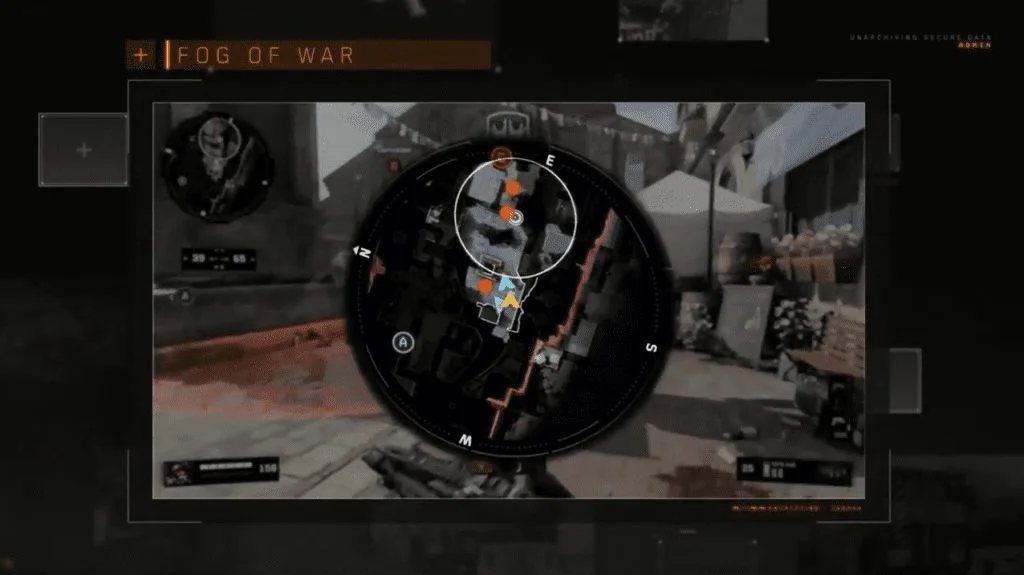
As development continued into the following months, the team continued to experiment with many new gameplay features and refine the current roster of Specialists.
War Gamemode
Another scrapped feature that was planned for Black Ops 4 was War, a gamemode featured in Call of Duty: WW2. War would feature cinematic missions with three different objectives on unique levels, including scenarios such as escorting an objective or capturing a hardpoint in an attack vs defense format.
The attacking team would have a set amount of time to complete an objective, and once
finished, the next objective (or ‘zone’) would start with an extension to the timer. As you’d expect, each objective became progressively more difficult as the match escalated.
The design team had several ideas for War objectives already in mind, but to ensure they were fun – they created several new placeholder game modes with these new objectives isolated. For example, the Stronghold gamemode would feature a single objective zone which needed to be captured or defended by either team. By isolating the individual objectives into Multiplayer modes, the team could quickly iterate on individual concepts before fully implementing them into the War missions.
One of the first War missions that was created for playtesting was Valencia. Set in a mountain village in Spain during a Dia de los Muertos festival, the level would present an uphill battle for attackers.
At first, the attackers needed to fight up a large central staircase to capture a zone. While most players would likely throw themselves in the battle, there were designated Sniper buildings overlooking the area. After capturing the objective, the attackers would then need to capture Battery Cells and insert them into a robot. The dropoff point would be protected by several overwatch positions and tight hallways, with several flanking routes for attackers.
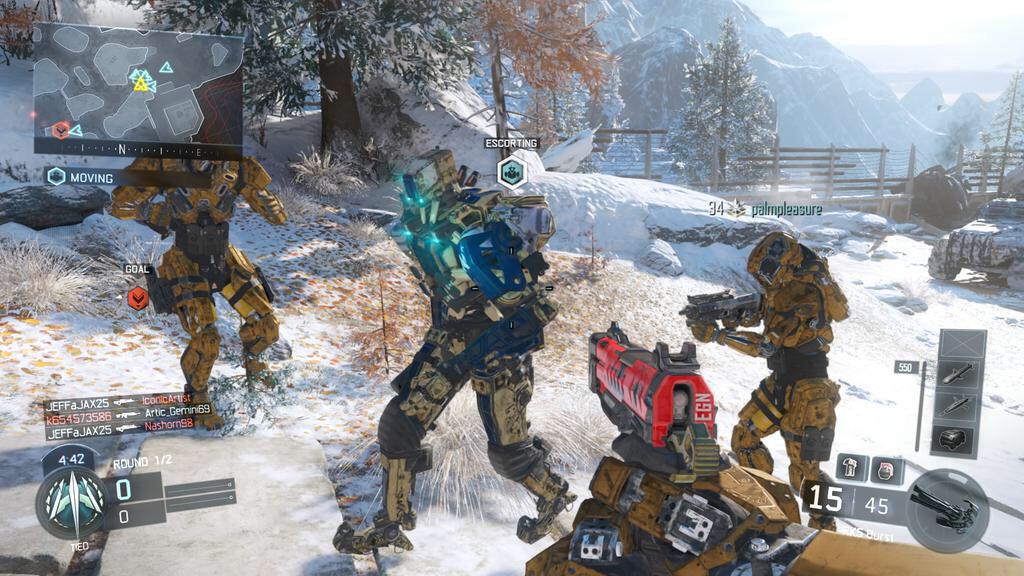
And finally, the attackers would need to escort the then-powered up robot throughout the village. As you can expect, the final objective would be increasingly frenetic and dramatic as both teams fought for victory.
Several other War missions were worked on such as Shipbreakers, which was set in a ship disassembly zone in Columbia. Glacier Dam, which was set in an icy facility in Spain. And Tekeze, which focused on a large river in Ethiopia. Some of these maps were developed for upwards of a year and went through several art passes.
The War mode was scrapped for several reasons, including a change in design philosophy and the team wanting to focus on smaller 5v5 modes such as Control rather than larger cinematic experiences. There were also some developers concerned that the War mode shared too many similarities to the 2v2 Career campaign, which while completely different in execution, had a definitive resemblance in some cases.
Reimaging Specialists
As 2017 nearly came to an end and the team began preparing for the Christmas milestone, roughly 10 Specialist characters would be completed. All of them were designed to serve a different role, like pieces on a chess board. Treyarch’s design and art teams put nearly a year’s effort into making each hero feel and play unique, and to serve as likeable Companions in the 2v2 Career experience.
Ajax
Ajax had a traditional Flashbang and his extremely powerful Ballistic Shield, which allowed him to block incoming gunfire and protect his team. His ultimate was the Riot Squad, which spawned in dystopian looking AI soldiers outfitted in oppressive riot gear. Breach and clear objective-based gameplay
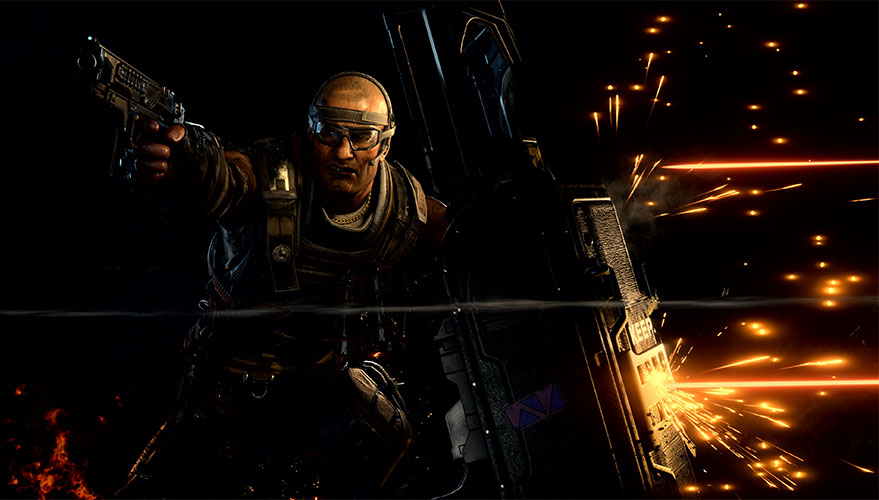
Battery
Battery had a Cluster Grenade and her War Machine, which not only shot bouncy cluster munitions similar to Black Ops III – but her helmet would also come down when equipped for bonus protection. Her ultimate was an Artillery Strike, which could bombard an area with devastating explosive firepower.
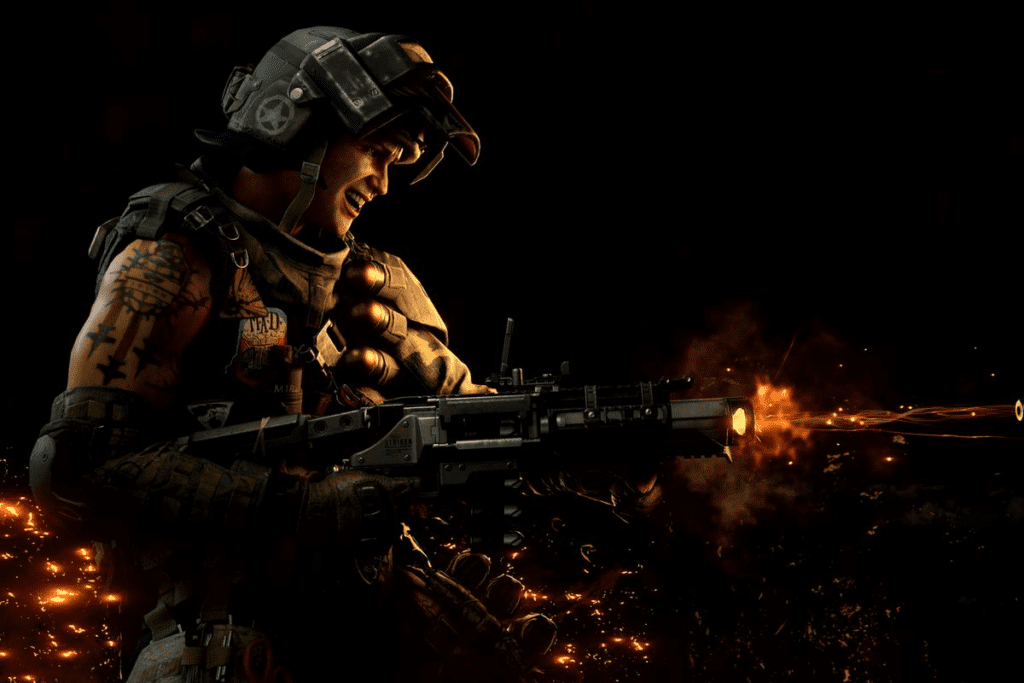
Crash
Crash had his good ‘ol Assault Pack, which supplied your allies with ammo alongside score bonuses towards their Ultimate progression. Alongside that was his TAK-5, which was a hand-held PDA which gave a speed boost and health buffs to selected allies (through walls!), and his Ultimate was his current TAK-5 – But under a different name, which gave your entire team an overheal and removed all debuffs.

Firebreak
Firebreak had a Molotov Cocktail and a Reactor Core, with his Ultimate being the Purifier. It’s a pretty standard kit but combined with the radiation’s ability to stop enemies from healing temporarily, Firebeak was extremely useful at flushing out objectives and denying enemy advancements.

Nomad
Nomad had his Mesh Mine and an RC-XD, alongside the K9-Unit Ultimate. His kit was pretty fitting for the survivalist playstyle and would’ve served as the go-to for old school Call of Duty players.

Prophet
Prophet’s abilities were the Seeker Shock Mine, which was just a downsized R.A.P.S from Black Ops 3 that drove around shocking enemies alongside his Tempest. His Ultimate was the Mantis drone, which was repurposed into a Scorestreak during development. Two words: Machine Empath.
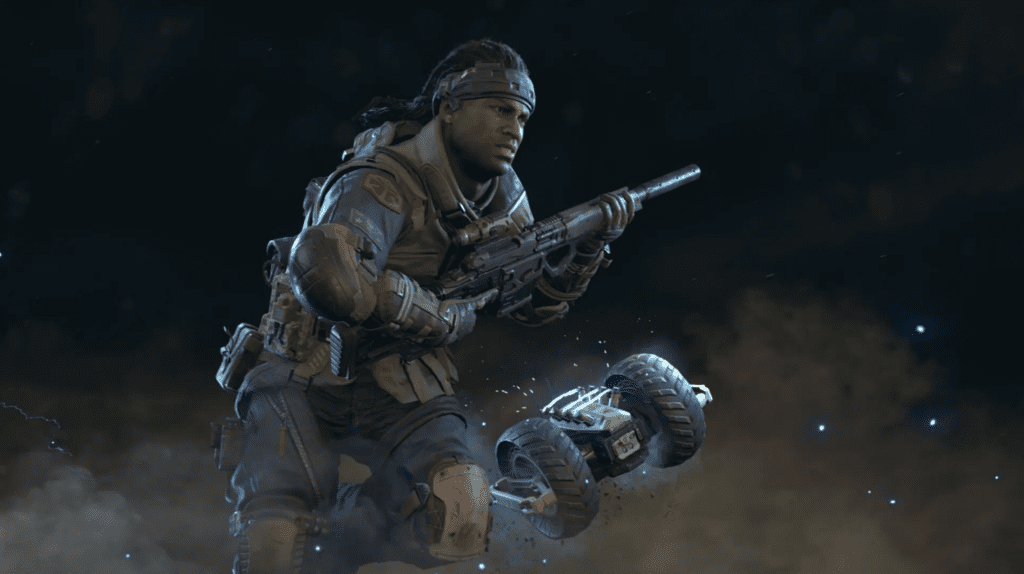
Recon
Recon had his Sensor Dart and Vision Pulse combo, which worked to fill in the gap for UAVs. His ultimate was the Drone Squadron, which released a large swarm of drones outfitted with machine guns. Treyach also playtested Recon with an Orbital VSAT Ultimate, however, they decided to go with the Drone Squad.
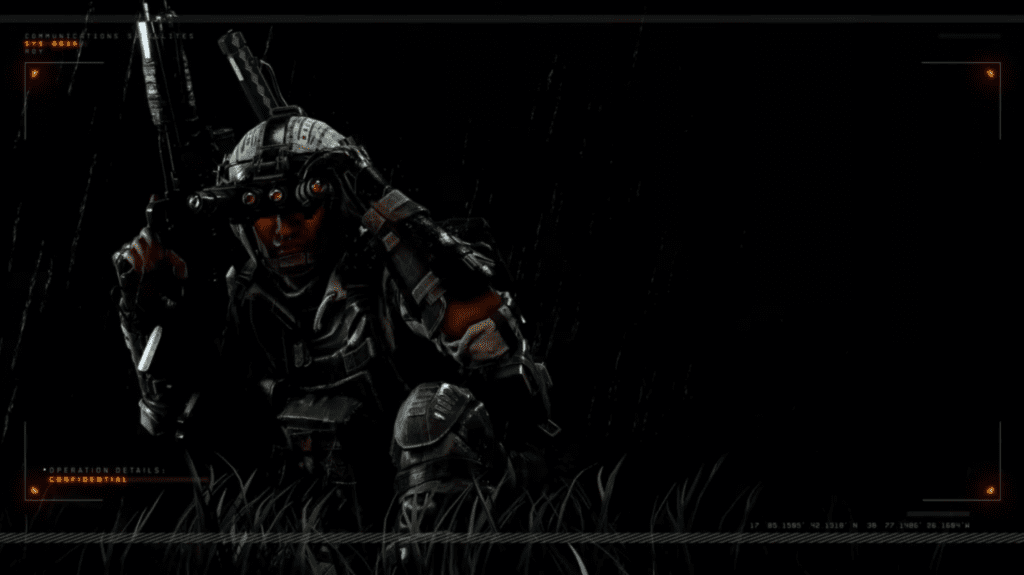
Ruin
Ruin had a Grapple Axe, which was similar to his current Grapple Gun but with the ability to grapple onto and execute enemies with a hatchet. His weapon was the Grav Slam, and the Ultimate was a Hellstorm Missile. Ruin was also one of the Specialists who could unlock a Thrust Pack through his Escalation progression. ‘Death From Above’ taken to the extreme.
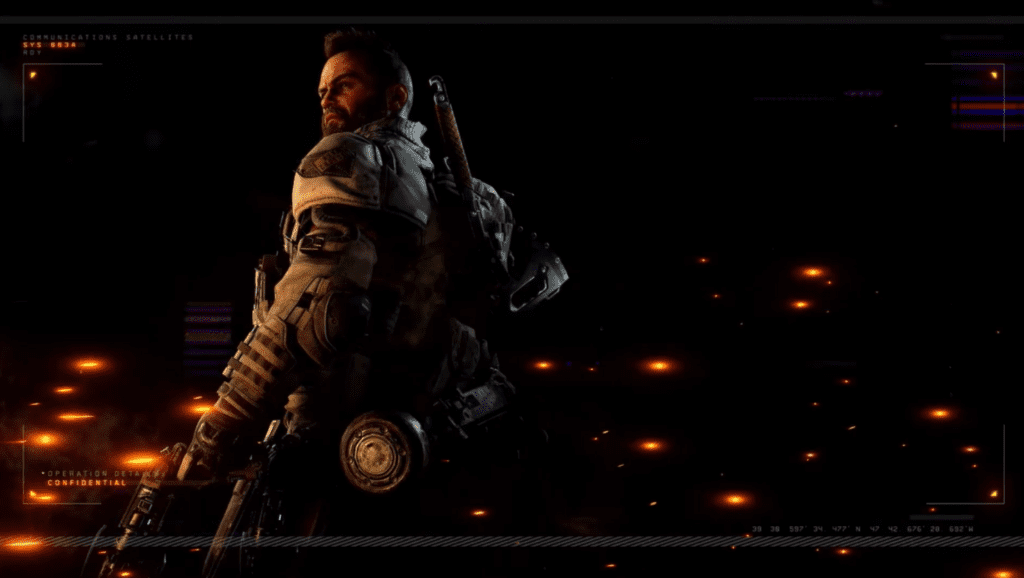
Seraph
Seraph had a placeable Spawn Beacon and a Combat Rally ability, which temporarily boosted herself and nearby allies. And the Annihilator pistol would return in all its glory as her Ultimate. Similar to Ruin, Seraph was also planned to unlock the Thrust Pack via her Escalation.
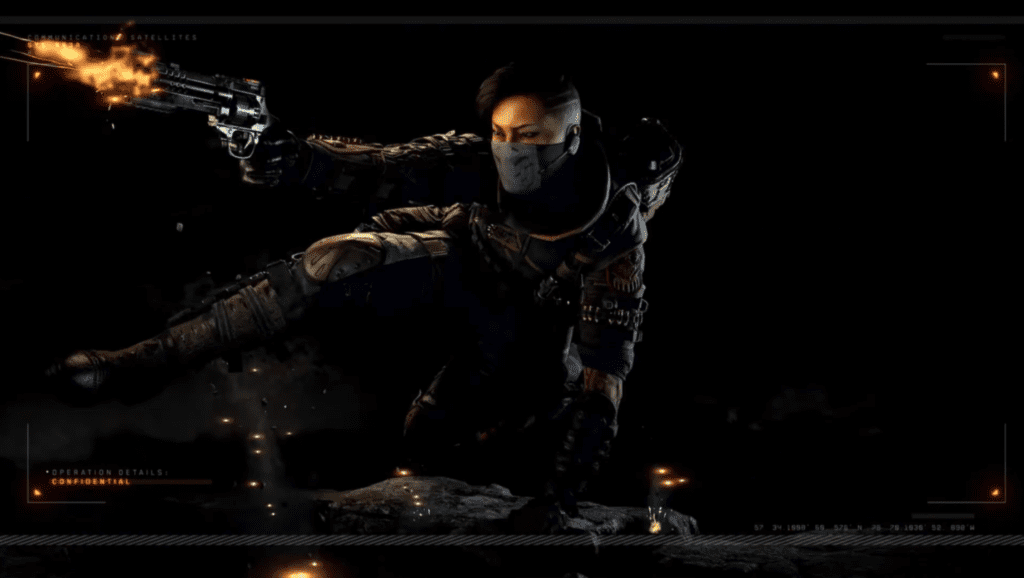
Torque
Torque had his Razor Wire and Barricade combo, with the Barricade being able to be remotely destroyed in the scenario that the enemy team was utilizing it. His Ultimate was a Sentry Turret that automatically harassed and damaged enemy players with a barrage of bullets. As you’d expect, Torque was your go-to for defending objectives and locking down choke points.

Directional Shift
At the start of 2018, the entire project would receive a massive shakeup after the Career campaign was completely scrapped, and the Multiplayer would receive extremely critical feedback from early playtesters, stating that the core gameplay was too different from the series traditional formula.
The removal of Career from the project and the frenzy that ensued after the negative playtesting feedback put the future of Black Ops 4 into uncertainty. With the team devastated, the designers would begin to redesign the core systems from the ground up.
Treyarch started brainstorming on how to transform the Multiplayer into something more grounded and familiar, whilst still keeping the several innovations they conveyed during development. The team saw no value in rebuilding the entire game from scratch, so their goal was to dismantle the negatively received features and retool them into a more “classic” feeling package.
Removing Escalation
One of the first major changes to be made was the complete removal of the Escalation system. After such negative feedback, the team’s first instinct was to scrap it entirely and replace it with the traditional Pick 10 create-a-class system.
Create-a-class was back and now universal. Perks were reintroduced and many of the previous Specialist abilities, such as Firebreak’s Molotov, was returned as optional equipment. For comparison, the original loadout system featured a primary and secondary, with five attachment sections each. You could equip a single piece of Gear and swap out your Specialist equipment. Everything else was earned via Escalation. As the Escalation system was gone, the design team tried to carry some of the old upgrades
into loadout items. For example, the Thrust Pack was a planned Gear, and was in builds of Black Ops 4’s Multiplayer up until April of 2018. The decision to make Black Ops 4 a boots on the ground title was only done a month or so before the full reveal, resulting in many of the maps being clearly designed for Jetpacks.
Everything needed to be retrofitted last second. Ladders were introduced on most maps, mantle clips were doubled across the board and most references to future technology were removed. Some team members were even concerned that the game would be deemed as “too futuristic” by the community, leading to Cybernetics being covered up on the Specialist character models.
Many of the base mechanics, such as being able to see teammates through walls, would be translated into new perks such as Team Link. And most of the Specialist abilities, such as Battery’s War Machine, would be simplified and nerfed heavily to balance out the gameplay.
Removing Scorestreaks
Another huge change would be the reintroduction of traditional Scorestreaks. As the Ultimates were activated by holding down the triangle, the control scheme was carried over to the Scorestreaks to reduce development time. The change was a relatively positive one, albeit taking away from the ability-focused gameplay the original Multiplayer design was trying to prevent.
Several of the Ultimate abilities, such as Ruin’s Hellstorm and Prophet’s Mantis were carried over as new streaks. Others such as Ajax’s Riot Squad were reimagined as the Strike Team.
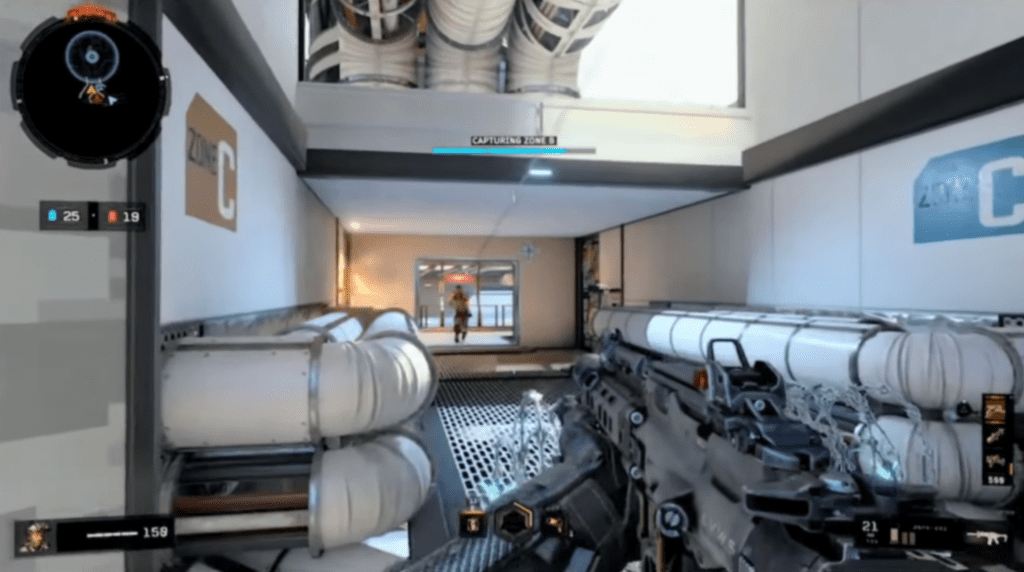
One of the earlier builds featuring Scorestreaks, using Black Ops 3 placeholders. Note the black square near Recon’s portrait, where the healing ability originally resided. (Note – image is public, from BO4 reveal.
While the removal of Escalation and Thrust Packs, a more traditional create-a-class system and the return of Scorestreaks seemed like an almost impossible task – the team managed to get a playable build done in only 2 months. But with only a few months to spare until the reveal, many smaller features meant for Black Ops 4 would be caught in the crossfire, simply due to wanting to simplify the gameplay.
One of those many features was Mag Dropping. When reloading a magazine with a half empty clip, the rest of the ammunition would be lost instead of going into your reserve. If you’ve ever wondered why the HUD shows your clips instead of reserve ammo count, that’s why.
Game Indentity
At the same time, another issue was brewing in the background, which was the identity and timeline of Black Ops 4. The original story was set after Black Ops 3 in a dystopian world where many of the world’s resources would be depleted, factions from the previous title such as the CDP would collapse, and two new forces would arrive on the world stage: the Word United Nations and the Free People’s Army.
However, with the original story gone, the remaining writing staff began brainstorming on how to reimagine the story to be a Black Ops 3 prequel rather than sequel. The apocalyptic inspired designs and prototype weaponry could reasonably be passed off within a prequel timeline, assuming all of the previous context was removed.
All of the signage, factions, and any references to the Career storyline were snuffed from the project.. although some snuck through the gaps. For example, the May 17th build of Black Ops 4 had a version of Seaside with the date ‘2069’ plastered all over the festival posters. A mistake which would promptly be fixed before the official Multiplayer beta.
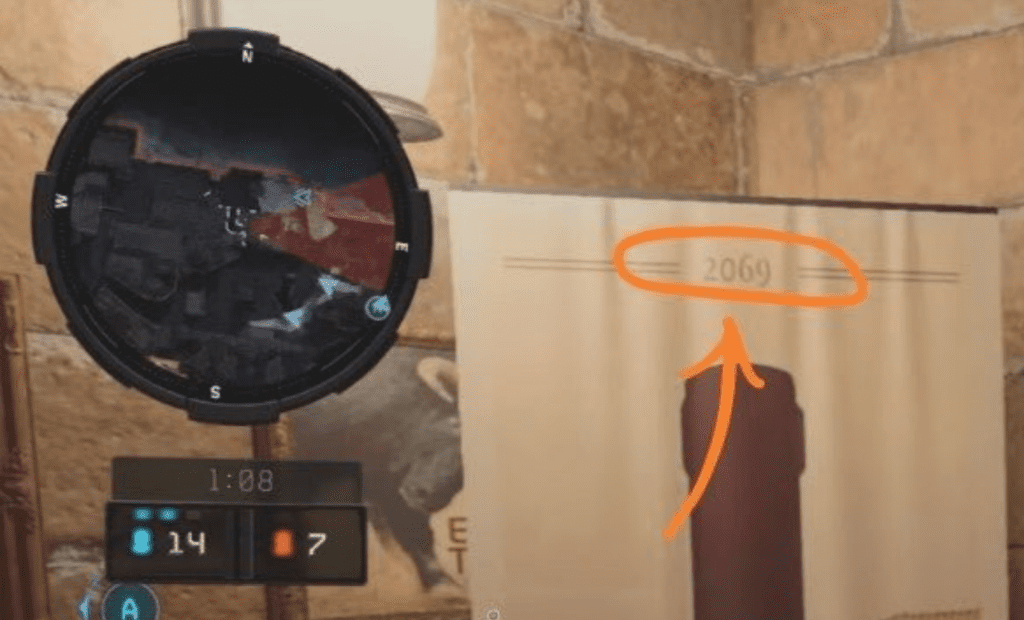
To assist with this new vision, Raven Software was employed to work on an all-new specialist War Stories campaign which would feature missions on unique levels which would outline the backstories of each Specialist in the mid 2050s.
Despite several prototype missions being created, most of which featured completely unique levels – the mode would also be scrapped completely before the official reveal event and replaced by the Specialist HQ tutorials.
The new storyline, written by only a few team members in less than a month, would take place during 2045 and would create a direct link between the Multiplayer and Blackout mode. High budget CGI cutscenes would be created for each of the Specialist characters and the story would be drip fed over the numerous Onboarding experiences. Additionally, an entire comic book series was created to establish the world building of Black Ops 4’s new universe.
While there was more planned for Specialist HQ and the greater narrative, the end result was essentially the same, and the lack of any substance beyond flashy cutscenes left the story dead on arrival.
As the development of Cold War quickly picked up after Black Ops 4’s launch, there was little motivation from the few writers left on the project to continue the story. The burnout from the cancellation of Career, combined with the stress of having to write an entirely new universe from scratch, was simply too much.
Dev Cruch
Redesigning an entire game in 5 months was a colossal task for the entire development team, one that would leave many employees exhausted and stressed. The QA was especially crunched for time, as the huge changes in the Multiplayer’s design needed excessive testing on all fronts. And to make things even worse, Blackout had just started development, which meant resources were already stretched thin.
The sloppy removal of Ultimates and reintroduction of streaks, alongside the huge redesign to Loadouts, created a large list of bugs that took away from the testing of other modes. It wasn’t uncommon for QA to be split between testing Multiplayer, Blackout, Zombies and many of the Specialist War Stories missions.
Jason Schreier interviewed several past and current employees who worked on Black Ops 4 and the crunch they endured during its development.
Current Day
The state of Black Ops 4’s Multiplayer is a compromise, a complete reimagination of their original vision. It’s impossible to know if Treyarch’s original plans would’ve serviced the game better in the long run, but the huge shakeup caused irreversible damage to the game’s schedule and development.
Several months that could’ve been spent focused on working on new content, was instead spent on remaking older systems and rewriting code. Many systems, such as Thrust Packs, were cut extremely late in the cycle and the many months spent on creating maps for Specialist War Stories could’ve been spent on new Multiplayer levels. And that’s not even considering the 2 years of development spent on the 2v2 Career and the 10+ missions which were scrapped completely. While game development is a complex journey and many things are expected to get cut in the process, it’s unfortunate that many of these decisions are made so late. It’s undeniable that a better product could’ve been conceived if Treyarch’s leadership had a better grip on the game’s direction.
The final result is a mismatch of assets, half-baked mechanics, unpolished ideas and a rushed last minute story meant to tie Blackout into a greater narrative that never was.
Anonymous authors on Insider Gaming privately provide additional images, videos, and documentation to back their claims before publication. Information that does not have proof or corroboration are not including within the report.
For more news from Insider Gaming, check out a rumor that suggests the PlayStation 5 Pro dev kit is already in developers’ hands. Or check out an Insider Gaming exclusive that reported on Ubisoft’s Project U.










This has been a thing in the recent call of dutys. Hope they know learned from their mistakes.
Great article ?